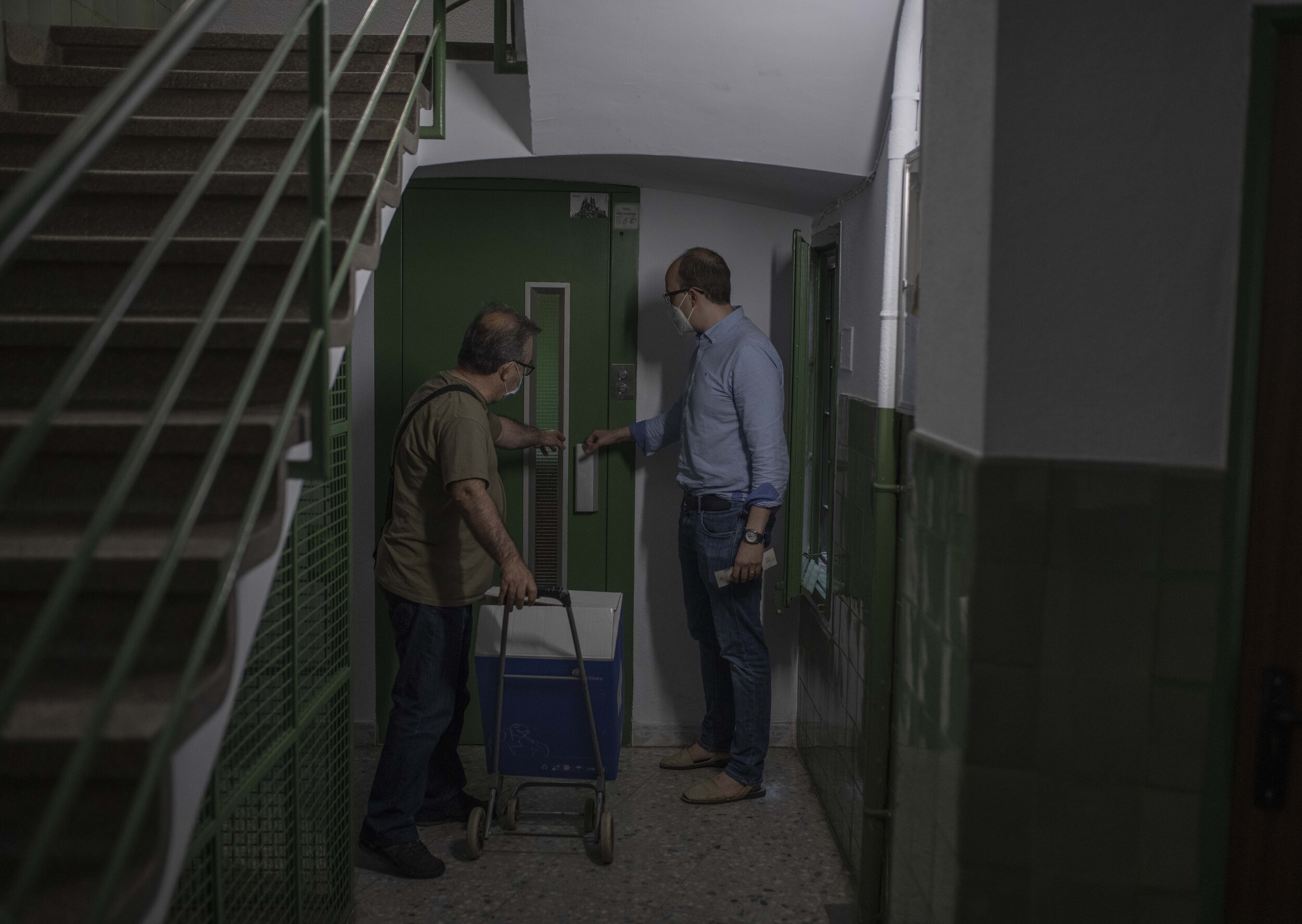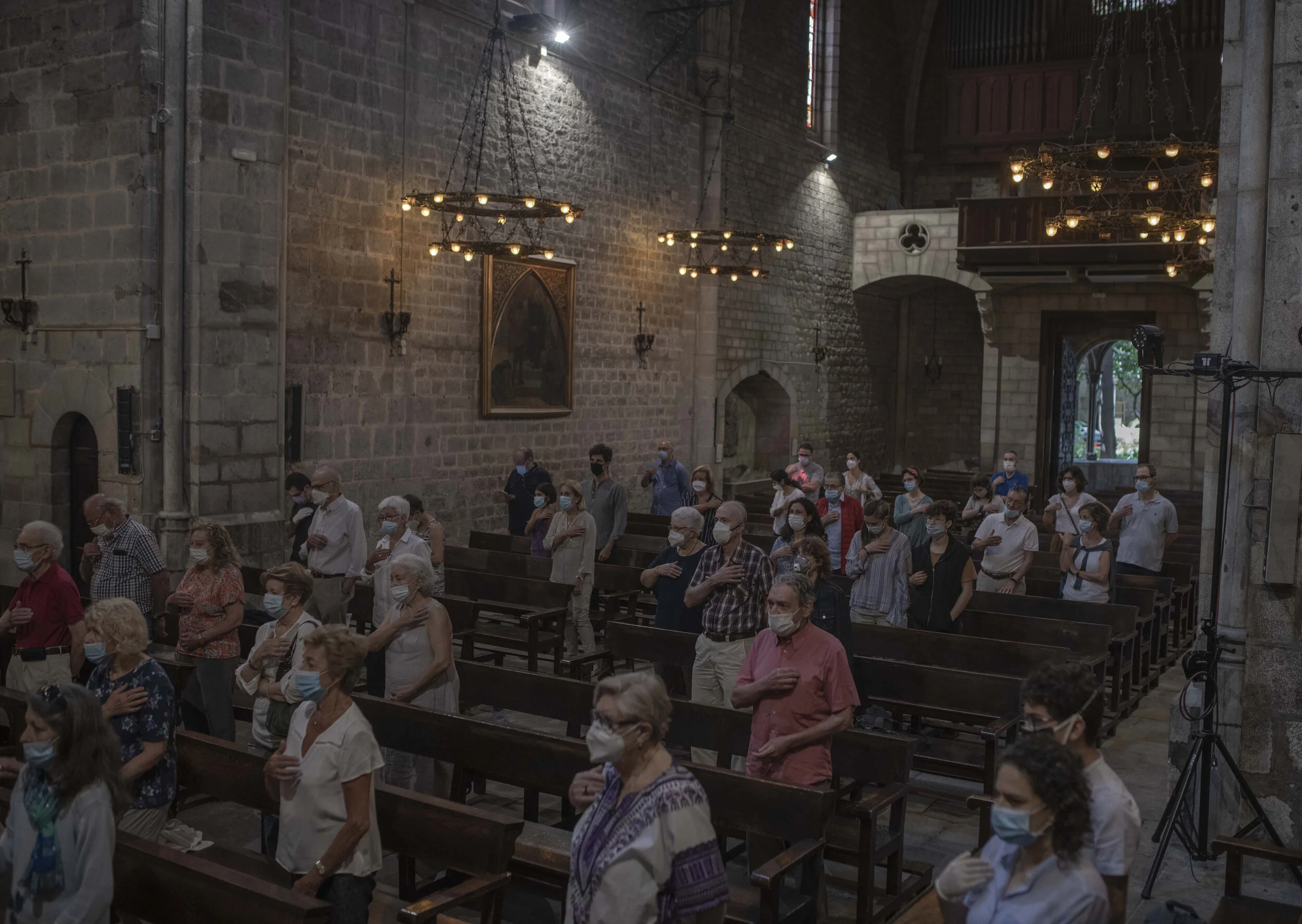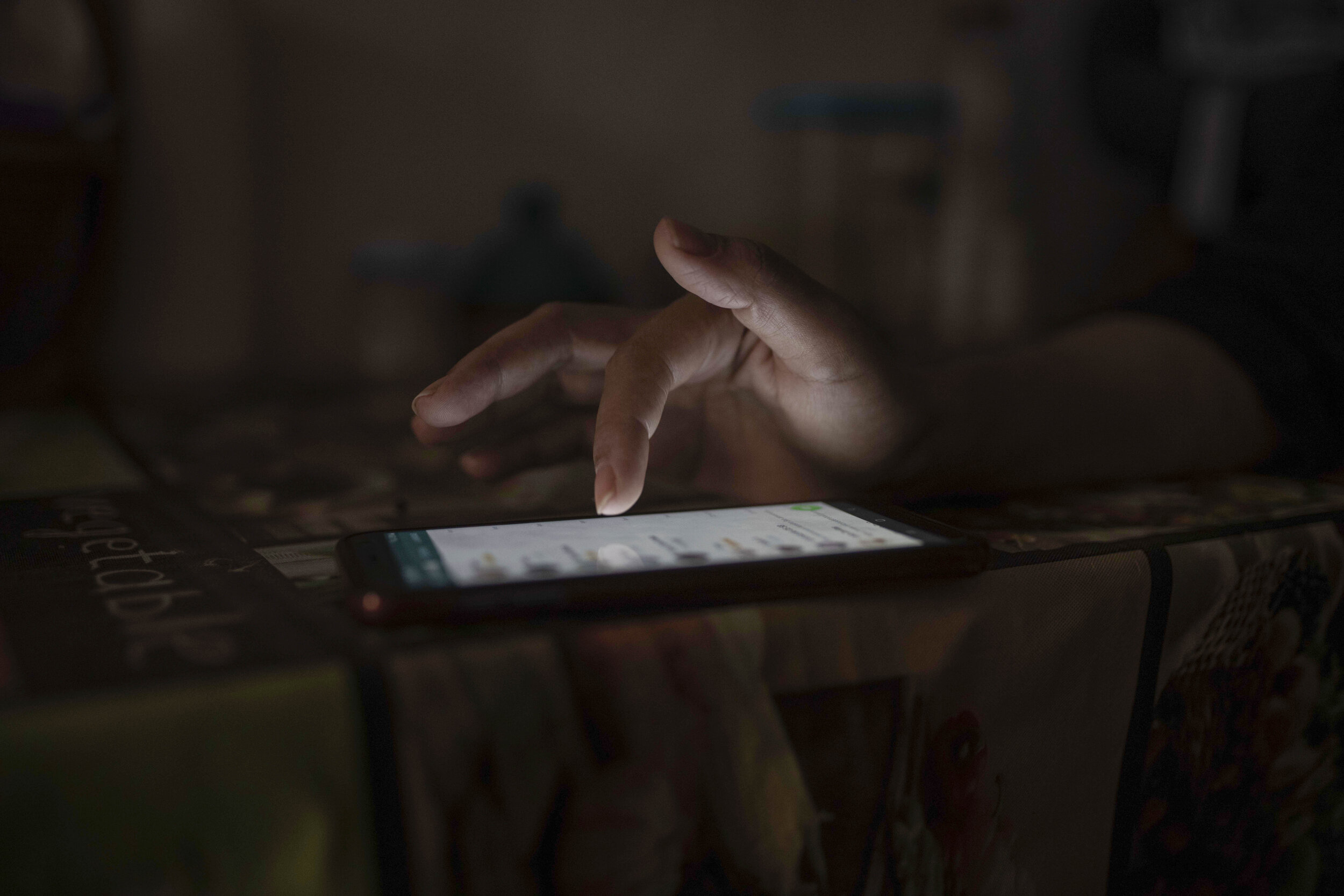Santa Anna
National Geographic Society’s COVID-19 Emergency Fund for Journalists
"Santa Anna" is a photography-based project that aims to portray the community for the community. The resulting material is permanently exposed inside the Santa Anna Monastery in Barcelona.
The opening took place on December 20, 2020, and was officiated by the creators of the Field Hospital, Xavier Morlans and Peio Sànchez. It was also presented by the protagonist of the story, Meritxell Galindo, in order to denounce and expose the social and economical effects of the pandemic to a public that has never been to Santa Anna before.
The project has been published in 28 different local media such as National Geographic Spain and mentioned in local TV channels such as TV3.
Volunteers prepare food for families inside the Monastery of Santa Anna. During the state of alarm and partial confinement, the Field Hospital distributed more than 200 meals, along with food supplies to the most affected families.
“The church is like a field hospital that welcomes the wounded”, were the words of Pope Francis that inspired Peio Sánchez, rector and doctor of theology and professor, Xavier Morlans, vicar and doctor of theology and professor, and Victòria Molins, nun, writer, and journalist, to found in 2017 the Santa Anna Field Hospital in a 12th-century monastery located in the heart of Barcelona.
Vicar Xavier Morlans, one of the founders of the Santa Anna Field Hospital, poses for a portrait after the daily service inside the Church of Santa Anna, in the center of Barcelona.
Food prepared to be distributed inside Santa Anna Monastery.
Before the pandemic, Santa Anna was a place where some of the city's 3,000 homeless inhabitants could rest during the day, and receive assistance. With its doors closed since March 2020 due to COVID-19, the Field Hospital has been providing support and food not only to the homeless but to people who before the pandemic had a job and were able to pay rent.
A street near Las Ramblas, one of the most famous tourist sites in Barcelona, during the coronavirus pandemic. On March 14, 2020, Prime Minister Pedro Sánchez declared a state of emergency and the partial closure of Spain due to the global COVID-19 pandemic. Since then, all shops in Spain have to close, except pharmacies and those that sell food and other basic necessities. Citizens, confined to their home, can only leave home for basic supplies, walk dogs or work and can only do so alone.
Pep Albin (right) and his neighbor, two Santa Anna volunteers, delivering food supplies to a family in the Sagrada Família district of Barcelona. Albin and his neighbor are part of the “Families Supporting Families” program, run within the Santa Anna Campaign Hospital.
Food provided by Santa Anna cooked in the Honduran style by one of the families helped by Santa Anna in Cornellà De Llobregat, in Barcelona.
Parishioners praying inside the monastery of Santa Anna, during the first mass officiated by the public after the state of alarm was decreed in March.
C.C, who has been helped by Santa Anna, puts up "job wanted" posters in the streets of Cornellà, Barcelona.
The building where C.C lives in Cornellà, and where Pep Albin distributes her food once a week.
H.H, who is helped by Santa Anna, looking for job opportunities in her home in Raval neighborhood, Barcelona.
C.M poses for a portrait in her home in Barcelona, in Poble Sec neighborhood. After having to leave her flamenco business during the 2008 Spanish Financial crisis, she has been working as a waitress and being part of the Spanish submerged economy, which represents 25% of the Spanish GDP according to Geshta. She is part of the population that has been more impacted by the economical effects of the COVID-19. Not being able to work due to the pandemic restrictions, and without any savings, she hasn't received any income since March. Since then, she has been going daily to pick up food packages for the first time in her life.
I found these plastic flowers inside Santa Anna. Some days after, I met C.M in the same place, queuing for food and reading a book “it’s about a princess”, she said. She never queued for food before this pandemic. She had a job, and “normal” life, she says. When the next day we went together to her home, I realized she had very similar flowers next to her bed.
In Spain, almost 1.1 million jobs were lost in the second quarter of 2020, and the economy entered a technical recession after recording a 17.8% fall in the gross domestic product (GDP) between April and June according to the National Institute of Statistics (INE). Job destruction in the first half of the year was nearly three times higher in Spain than in other European countries according to Eurostat, and the coronavirus crisis continues to have a devastating effect on the Spanish labor market.
Meritxell Galindo posing for a portrait at her friend's house. "What has mattered me the least has been the desease. What really worried me has been staying on the streets, seeing myself with nothing, not having a job, not getting paid. I even sold the ring that my husband gave me to pay the rent, "says Galindo.
On 13 of March Meritxell Galindo was fired from the bakery that she worked in the Gracia neighborhood, in Barcelona.
"We have been taken everything away, and the government has not taken care of us. We are invisible", says Galindo, "I never would have imagined that I would find myself in this situation". The economic support provided by the government and her savings weren't enough to support the price of the rent where she and her husband, who also found himself unemployed, lived. Now, they live in a room in a shared apartment, in the suburbs of the city.
Galindo, it's just one case among many, where the pandemic has exposed and accelerated a weak economic system suffered by many middle-class citizens since the last financial crisis that hit hard the country in 2008.
Meritxell Galindo, leaving the house of a friend who helps her with food provided by an NGO, in Hospitalet De Llobregat. Galindo worked in a bakery before the pandemic and was fired on March 13. Galindo is helped by Santa Anna looking for new job opportunities, and previously with food.
Views in Hospitalet De Llobregat.
Meritxell Galindo watching TV in the house of a friend who helps her with food provided by an NGO, in Hospitalet De Llobregat
A meditation activity organized by Vicar Xavier Morlans in Santa Anna.
Meritxell Galindo was interviewed by various local channels after the exhibition, and she visualized the situation where many were and are today in Spain.













